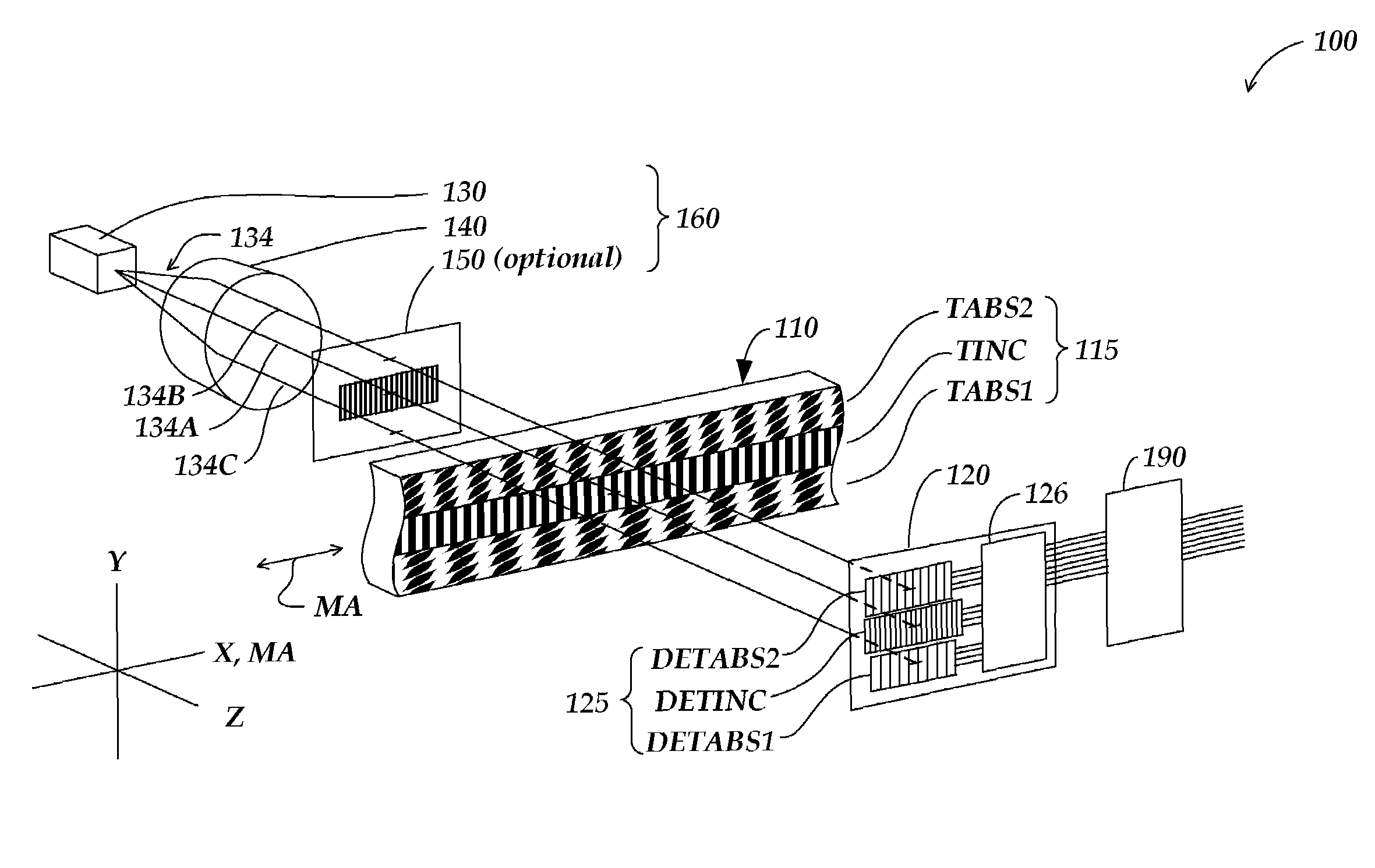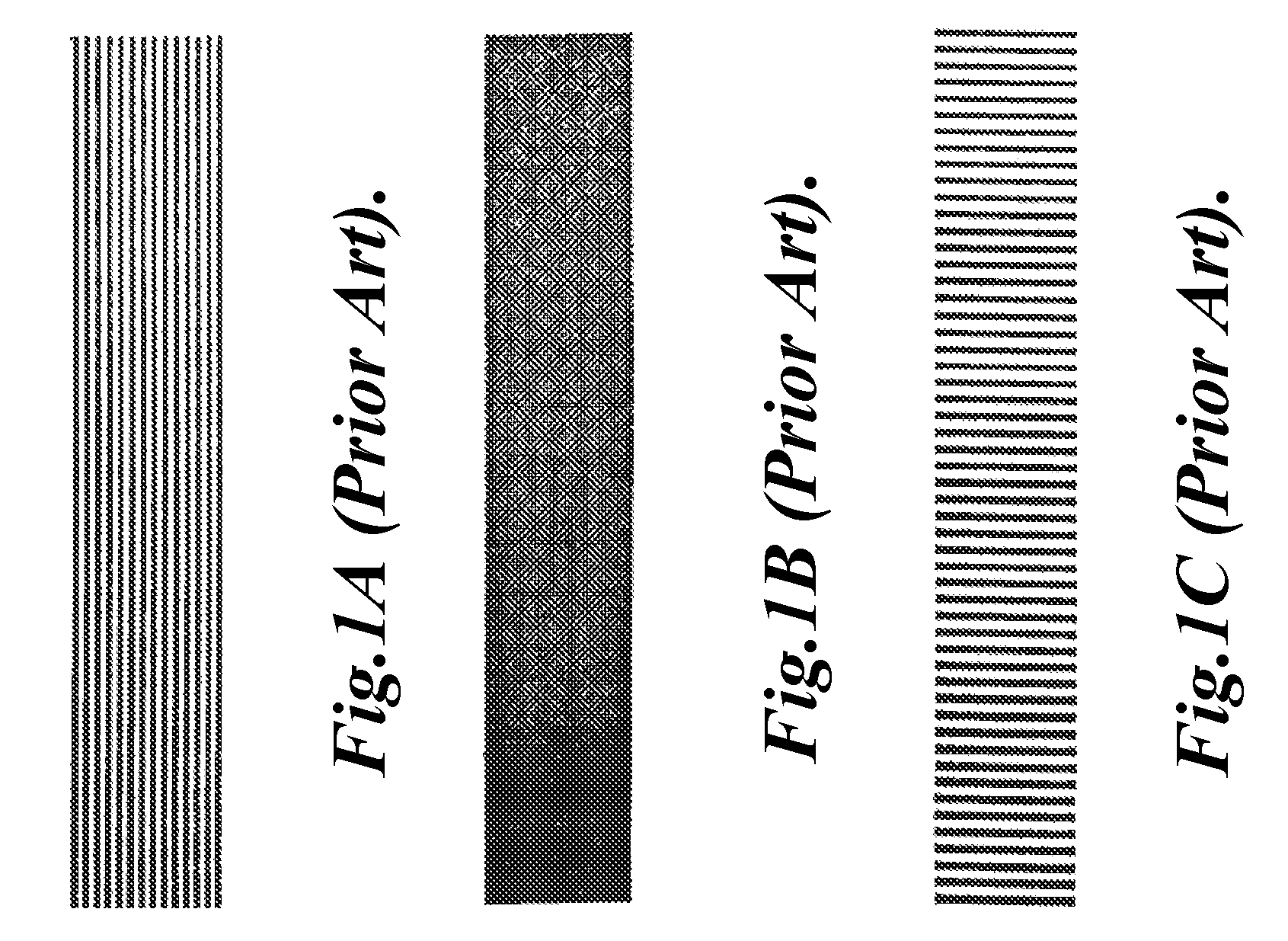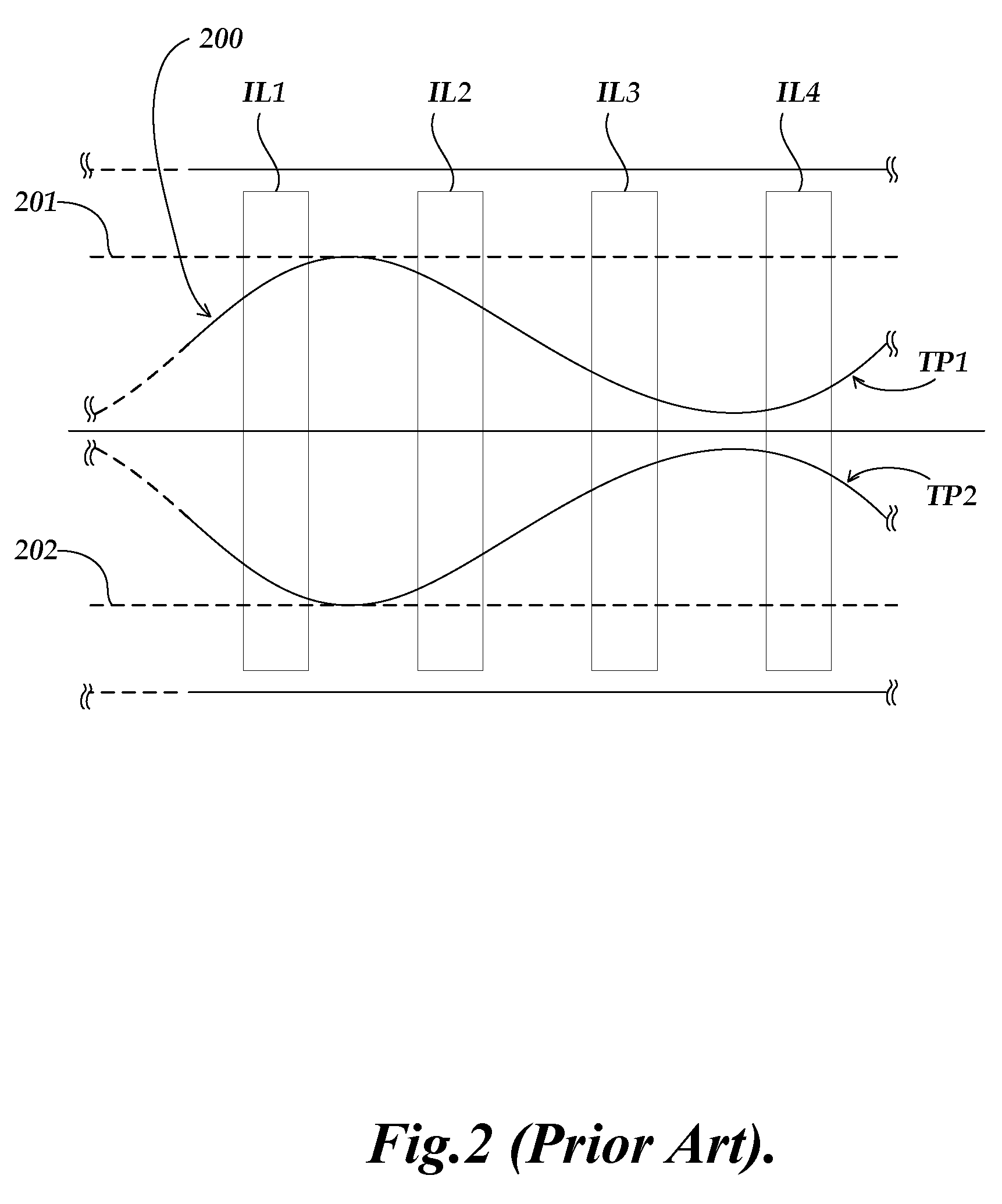Scale track configuration for absolute optical encoder including a detector electronics with plurality of track detector portions
a technology of absolute optical encoder and detector electronics, applied in the direction of converting sensor output optically, instruments, measurement devices, etc., can solve the problems of significant fabrication, detection and signal processing problems, and is not suitable for a practical high-resolution absolute encoder, and achieve the best range-to-resolution ratio, the effect of reducing the fidelity of sinusoidal signals and achieving the best possible sinusoidal fidelity
- Summary
- Abstract
- Description
- Claims
- Application Information
AI Technical Summary
Benefits of technology
Problems solved by technology
Method used
Image
Examples
Embodiment Construction
[0025]FIG. 3 is an exploded diagram schematically illustrating one embodiment of an absolute optical encoder configuration 100 including various features in accordance with the present invention. As shown in FIG. 3, the encoder configuration 100 includes a scale element 110, detector electronics 120 which is connected to signal generating and processing circuitry 190 by power and signal connections 192, and an illumination system or portion 160 comprising a light source 130 for emitting visible or invisible wavelengths of light, a lens 140, and an optional source grating 150. The light source 130 may also be connected to the signal generating and processing circuitry 190 by power and signal connections (not shown). The scale element 110 includes an absolute scale pattern 115 including three scale track patterns: an incremental track pattern TINC, a first absolute track pattern TABS1, and a second absolute track pattern TABS2, described in more detail below with reference to FIG. 4. ...
PUM
 Login to View More
Login to View More Abstract
Description
Claims
Application Information
 Login to View More
Login to View More - R&D
- Intellectual Property
- Life Sciences
- Materials
- Tech Scout
- Unparalleled Data Quality
- Higher Quality Content
- 60% Fewer Hallucinations
Browse by: Latest US Patents, China's latest patents, Technical Efficacy Thesaurus, Application Domain, Technology Topic, Popular Technical Reports.
© 2025 PatSnap. All rights reserved.Legal|Privacy policy|Modern Slavery Act Transparency Statement|Sitemap|About US| Contact US: help@patsnap.com



